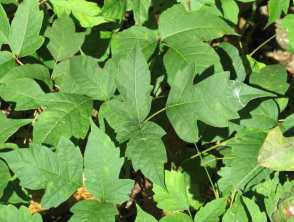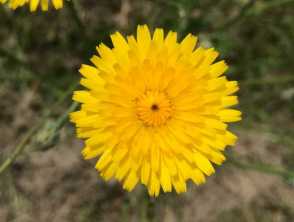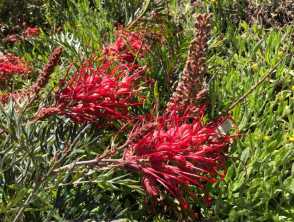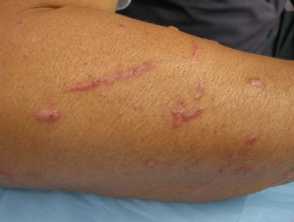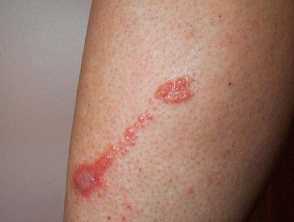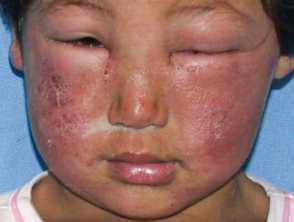What is plant dermatitis?
Plant dermatitis is an inflammation of the skin caused by topical contact with a plant or plant constituent.
Phytodermatitis is the formal medical name for plant dermatitis, and it may be an irritant contact dermatitis, allergic contact dermatitis, or phytophotodermatitis.
Contact urticaria and mechanical irritation can also be due to plants.
Common plants that cause dermatitis
Who gets plant dermatitis?
Plant dermatitis can affect anyone in contact with the specific plant component including the sap, bark, wood, leaf, stem, flower, pollen, or fruit. Exposure may be:
- Accidental contact such as brushing a rhus tree when walking past
- Airborne due to plant-associated aeroallergens, for example compositae allergy
- From gardening and cooking activities
- Occupational including florists, farmers, chefs and food handlers, fruit pickers, and horticulturists.
- From use of plant-based essential oils and fragrances found in topical applications, diffusers etc. such as tea tree oil.
What causes plant dermatitis?
- Chemical or mechanical irritant
- Skin injury damaging the skin barrier
- Can affect anyone with sufficient exposure
- Chemical irritant such as seaweed toxins
- Mechanical irritant eg, Bindii dermatitis
- Contact allergen
- Delayed (type 4) hypersensitivity reaction
- Only affects someone with an immune-mediated allergy to it
- Examples include primula, poison ivy, grevillea
- Phytophototoxicity
- Plant-derived phototoxin
- Furocoumarins (psoralens) eg, sap of cow parsnip, lime peel oil
- Skin reaction following contact is induced by UVA in sunlight
- Plant-derived phototoxin
- Contact urticaria
- Non-immunological, for example formic acid in stinging nettles
- Immunological eg, latex, the sap from rubber trees
What are the clinical features of plant dermatitis?
- Asymmetrical
- Patterned such as linear or spattered
- Erythema, blistering, scaling, or cracks
- Distribution relative to contact site:
- Localised — usual pattern
- lips in allergic contact cheilitis or fingertip dermatitis
- eyelid dermatitis if airborne allergen
- Involvement beyond initial contact site — uncommon
- for example accidental transfer of allergen or irritant from fingertip to eyelid
- Localised — usual pattern
- Onset
- Rapid if acute irritant, phototoxic, or contact urticaria
- Delayed while sensitisation develops in allergic contact, then rapid on subsequent exposure
- Symptoms
- Burning pain with irritant or phototoxic reactions
- Itchy if allergic contact
- Contact urticaria may cause burning, tingling, or itch
Plant dermatitis
How do clinical features vary in differing types of skin?
- Erythema may be difficult to observe in skin of colour.
- Postinflammatory hyperpigmentation is more pronounced in dark skin compared to fair skin.
What are the complications of plant dermatitis?
- Secondary bacterial infection
- Disseminated secondary eczema
- Chronic photosensitivity dermatitis [see Chronic actinic dermatitis, Compositae allergy]
- Pollen-food allergy syndrome
- Systemic contact dermatitis
How is plant dermatitis diagnosed?
Plant dermatitis should be suspected clinically on history and examination. Tests may be undertaken to clarify or confirm the diagnosis.
- Patch testing
- Open application test
- Skin prick testing
- Photopatch testing
- Immunoglobulin E tests eg, RAST for latex allergy
What is the differential diagnosis for plant dermatitis?
- Reactions to moths, caterpillars, insects, and other arthropods
- Contact reaction to pesticides used on plants [see Photocontact dermatitis]
- Other forms of dermatitis
- Psoriasis and other conditions showing the Koebner phenomenon
What is the treatment for plant dermatitis?
General measures
- Minimise contact with the relevant plant
- Protective clothing
- Remove the implicated plant from the garden
- Sun protection
- Avoid aggravating the problem with potentially irritating or allergenic topical applications
- Cool compress
Specific measures
- Topical or oral corticosteroids for the acute inflammatory phase
- Chronic plant dermatitis may require systemic immunosuppressant medication
What is the outcome for plant dermatitis?
Plant dermatitis is usually self-limiting provided further contact with the implicated plant is avoided, although postinflammatory hyperpigmentation may persist for weeks or months. A true plant allergy persists lifelong.
Some forms of contact are unavoidable such as in airborne compositae allergy and a chronic photosensitive dermatitis may follow.
